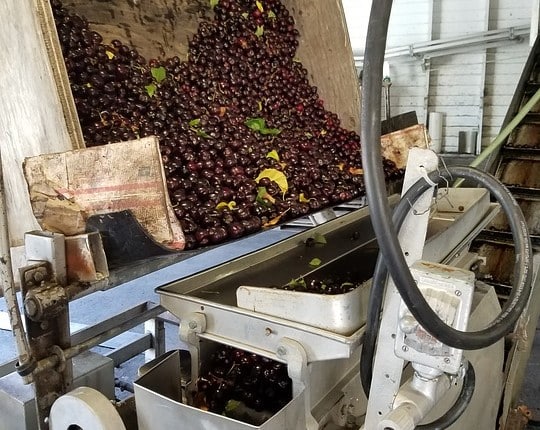See the 3 Most Crucial Regulations for Food and Beverage Distributors
Even as the Food and Drug Administration discussed implementing their New Era of Smarter Food Safety, the agency was inundated with back-to-back food recalls. The situation was made more controversial by how quiet the news was kept by the FDA, and reflects just how badly the food and beverage industry needs transparent supply chain reforms. The good news is most of the affected parties were able to trace back the source of the pathogen, which also reinforces the value of traceability in any recall plan.
However, the controversy around this particular incident overshadows a worse reality: food recalls are consistently growing, and federal compliance is outpaced by the actual speed of the industry. This is dangerous to processors and distributors who must address ever-growing consumer demands for food transparency and demonstrate they are able to track and trace every product ingredient – especially in the event of adulteration. Only by implementing modern technology solutions can food processors and distributors achieve the level of traceability they need keep consumers happy, and set up a recall plan that fulfills the former.
Here are the steps you need to take to set up a food recall plan that meets regulatory and consumer demands for traceability:
1. Leverage ERP for Recall Traceback Data and Quality Control
Enterprise Resource Planning (ERP) systems are comprehensive software applications that provide a centralized database built around core finance and operations fields. ERP solutions enable process manufacturers (such as food processors) to connect siloed divisions and capture end-to-end visibility across supply chains. Access to an enterprise system is critical to implementing traceability for your food recall plan, as your software can capture electronic documentation of every transaction and process action in your value chain.
- ERP electronic audit trails can be used to reverse trace contaminants
Your ERP can be leveraged for both traceback data as well as real-time insight based on your internal categorizations. Everything from raw materials to inventory lots has a data entry field that allows users to track and trace every product down to the component level. These electronic records provide an audit trail for each batch, so that in the event of confirmed contamination (or other form of adulteration) the affected product can be traced back through distribution points to production, to ingredient source.
- Tracebacks help map out adulterated product batches
Using your ERP to trace the raw material origin points of adulterated products also lets you more quickly identify other potentially contaminated food packages. Many recalls are due to factors such as cross-contamination, which often occur at harvesting and processing points. Your ingredient audit trail within your enterprise software can be used to map out the extent of the adulteration across your supply chain and determine the ultimate scope of your recall plan.
2. Migrate to the Cloud to Automate Traceability Compliance
If there is a synonym for cloud applications, it is “update automation” – software delivered as a service (SaaS) and hybrid infrastructures that maintain a service connection allow your system to download the necessary files in the background. This means that modifying your ERP for regulatory changes can be done seamlessly and in real-time if need be. The latter is especially important for keeping your food recall plan up-to-date with the latest compliance requirements.
- Compliance automation allows you to adapt to FSMA updates
The FDA’s New Era of Smarter Food Safety promises to make significant changes to the Food Safety Modernization Act (FSMA). No matter what form these ultimately take, food processors and distributors will have to adjust existing compliance processes to compensate. With cloud connectivity, quality assurance features in your ERP can receive cumulative updates that address these revisions much faster than with manual entry, enabling a much less disruptive (and noncompliant) recall.
- Automatically update processes for other obligations as well
The FDA is not the only authority that oversees food and beverage recalls, and manufacturers and distributors must also be able to adjust to all the variations for regulatory divisions. Other federal agencies (USDA, CDC, etc.), trade associations, regional governments, and international organizations can all have their own rules for businesses that manufacture or distribute food products in their jurisdictions (including your suppliers). Cloud ERP allows you to keep track of reporting differences and deadlines in real-time and ensure that you stay in contact with all food supply chain stakeholders.
3. Carry Out Mock Recalls to Test Traceability
The final step in establishing your food recall plan is to create a simulated mock recall that will demonstrate the effectiveness of your strategy and highlight vulnerabilities. Note that while this is not in itself a regulatory requirement, food processors and distributors are expected to show that they have a recall procedure in place – mock recall results can be treated as a proof-of-concept factor by compliance inspectors. If your business can prove that a product and its ingredients can be traced across your supply chain no matter the circumstance, it will go a long way towards complying with future FSMA obligations.
- Gauge the tracking efficiency of your ERP as well as your processes
Executing a recall successfully is equal parts technology and user awareness, and the best ERP solutions are open to customization to allow adaption to your internal culture. A mock recall is a good chance to ensure that you have developed your software to accommodate regulatory standards, and that your processes similarly can handle real-world challenges. When carrying out a simulated recall, it is important to review all your data fields and modify those that are not allowing seamless lot and batch tracing.
Migrate to a Solution that Guarantees Food Traceability
A food recall plan is necessary not just for compliance, but also to ensure survivability and competitiveness in a world where customers are always connected to your brand. Food and beverage companies must demonstrate that they have control of their supply chains to maintain consumer trust, and the most effective method to achieve this is through traceability enabled by technology.
Contact SWK today to learn more about your options for ERP that enable end-to-end visibility and traceability in the event of a food or beverage recall.


